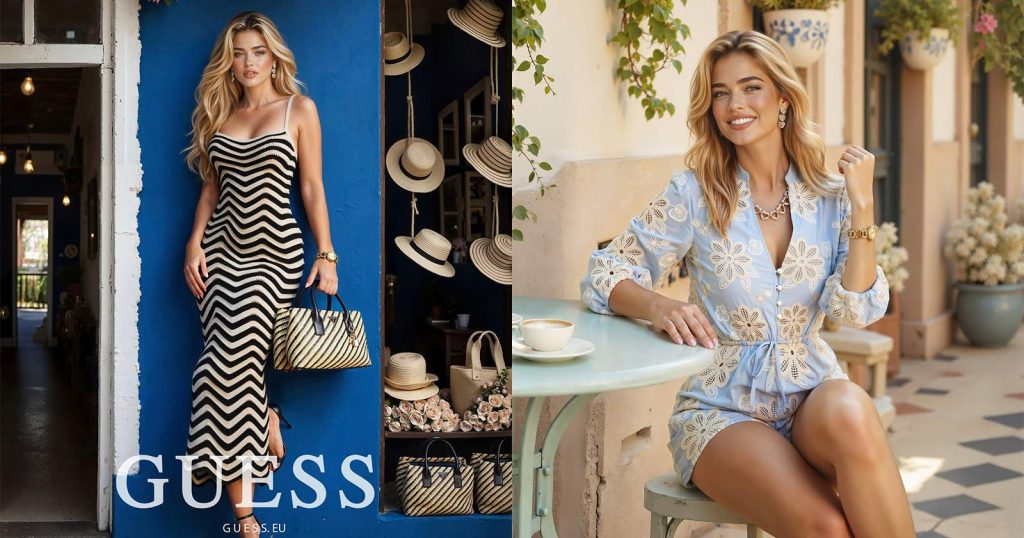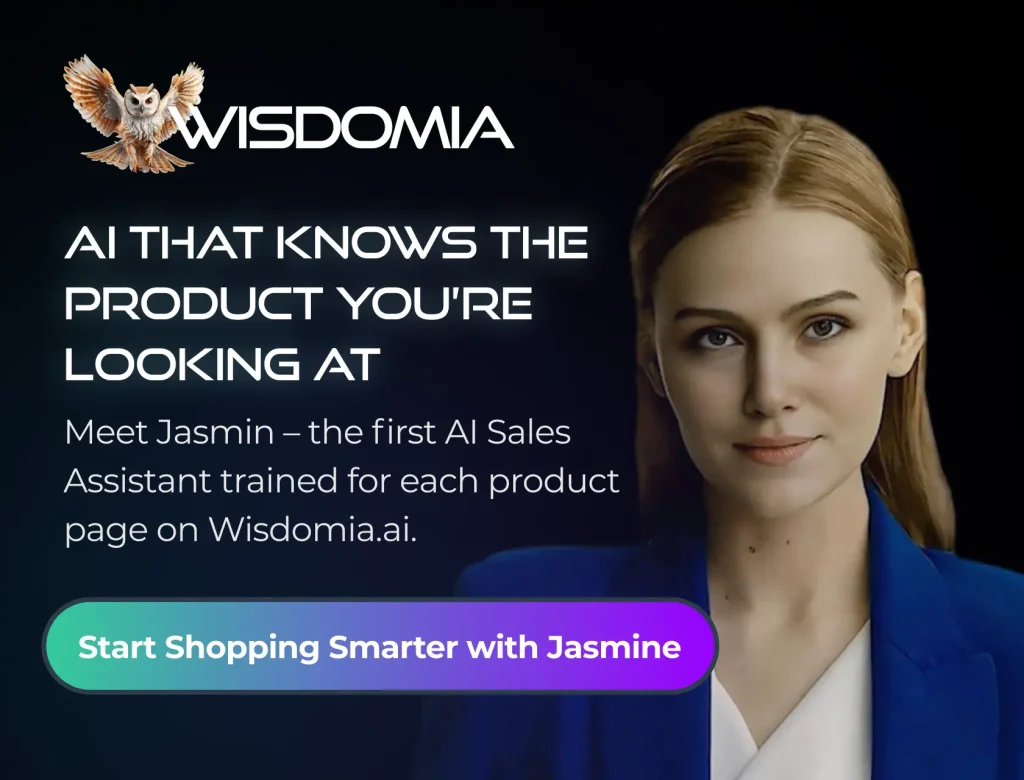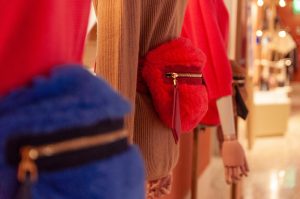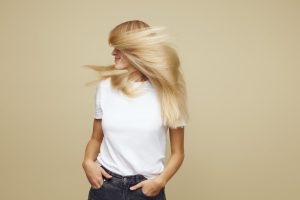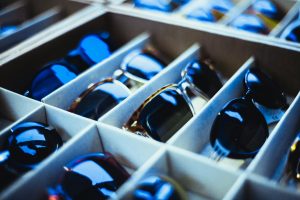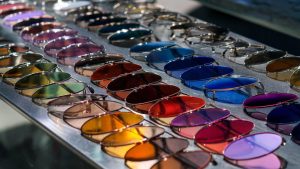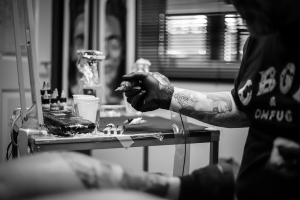The Vogue August 2025 issue features a Guess ad with Seraphinne Vallora’s AI fashion model, sparking debates on beauty standards and inclusivity in fashion. Will AI fashion models promote diversity, or reinforce unrealistic ideals, deepening the divide?

Vogue US August 2025 issue has hit the newsstands with a two‑page spread for Guess subtly labelled, “Produced by Seraphinne Vallora on AI.” The campaign’s AI-generated hyper‑perfect model treads the line between photorealism and impossible beauty standards, sparking a viral debate about beauty ideals in an era increasingly shaped by algorithmic creativity.
The fashion industry has long advocated the foundations of natural beauty, authenticity, diversity and inclusivity. The growing awareness for celebrating individuality, from diverse body types and skin tones to natural hair textures and unfiltered faces, has been the focus of all innovations until now.
So, will AI disrupt this all?
In 2025, fashion tech startups attracted $1.1 billion in funding. Pioneering AI-driven solutions, these startups offer design, blockchain-powered supply chain and virtual try-on. Similarly, the global beauty tech market is projected to reach $100 billion by 2027, driven by advancements in AR, AI, and mobile technology. However, the industry is divided about using AI-generated fashion models for culturally relevant magazines like Vogue.
While AI models offer advantages like reducing the environmental cost of photoshoots, streamlining campaign production, and allowing fashion brands to visualise garments on diverse body types, what sparked the debate was the (subtle) revelation that the fashion model was created with AI.
The technology could be a tool for inclusivity and sustainability but the new, perfect fashion model in the Guess ad is an open gate to a regressive, digitally enhanced monoculture.
Here’s what the integration of AI-generated models in campaigns means for the future of fashion — and how forward-thinking fashion brands and publications can harness its potential while preserving authenticity, responsibility, and cultural resonance.
Artificial Intelligence: Impact On Beauty Standards
Inclusivity and diversity has become mandatory in the beauty industry as consumers increasingly look for authentic representation. People from all backgrounds—regardless of race, skin tone, gender, age, or ability—want to see themselves reflected in campaigns and product lines. Representation is powerful because it embraces the beauty in each individual and expands the collective beauty standard — beyond the Eurocentric beauty standards that have historically dominated the industry.
The importance of diversity, equity, and inclusion in beauty marketing makes it clear that fashion and beauty brands which recognise this build genuine connections with consumers who prioritise these values. Studies support these outcomes. A McKinsey report revealed that companies with inclusive marketing practices outperform their peers in profitability. Similarly, Nielsen found that 59 percent black consumers are more likely to buy from brands that feature people of their own ethnicity in advertisements. These findings underscore the value of inclusive marketing—as a moral imperative and a driver of success.
However, the Vogue August 2025 spread featuring an AI-generated model threatens to undo that progress. AI’s growing influence in fashion raises complex questions around beauty and perfection. Tools like Midjourney, DALL·E, and proprietary fashion-focused models such as the one used in the Seraphinne Vallora campaign can create flawlessly symmetrical, racially ambiguous, and digitally perfect figures.
The Guess ad in Vogue, with its hyper-perfect model, embodies this tension. While technically impressive, it resurrects outdated beauty ideals—white, slim, and unblemished—crafted by an algorithm trained on centuries of visual data. In this context, AI doesn’t innovate; it recycles. Instead of challenging conventional norms, it reinforces them, algorithmically amplifying the most dominant (and perhaps exclusionary) past aesthetics.
The media has long held the power to define beauty standards, and with that power comes responsibility. Historically, magazines like Vogue have shaped the cultural perception of what is desirable—often to the exclusion of marginalised identities. In the AI era, that influence magnifies. When a culturally influential publication promotes an AI-created model as the new face of fashion without transparency, context, or critique, it sends a message: artificial perfection is the new aspirational standard. To avoid regressing into a digitally enhanced monoculture, the industry must approach AI with intentionality—ensuring that innovation does not come at the cost of authenticity, visibility, and equity.
Fashion’s AI Future—Opportunity or Obstacle?
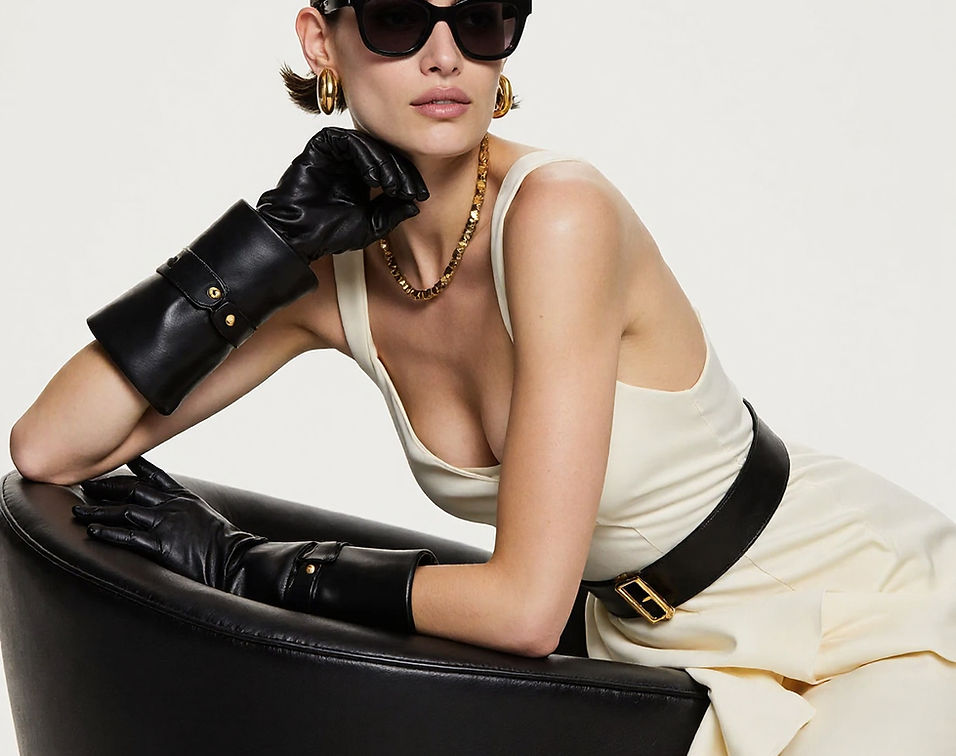
AI Fashion model created by Seraphinne Vallora
AI is poised to redefine the fashion industry, offering tools for creativity, customisation, and operational efficiency. On the surface, it presents a compelling opportunity: digital models can reduce the environmental cost of photoshoots, streamline campaign production, and allow fashion brands to visualise garments on a broad spectrum of body types, skin tones, and styling aesthetics—if used with intention.
Designers like Iris van Herpen and brands such as The Fabricant have already begun leveraging AI-generated visuals to push the boundaries of imagination and artistry, democratising high fashion in virtual spaces. In this sense, AI could be a tool for inclusivity and sustainability, helping brands experiment with representation without the logistical constraints of traditional production. Fewer on‑site shoots mean less wardrobe changes, low travel emissions, and smaller production footprints.
Yet, the same technology that promises innovation also carries serious implications. One of the most immediate concerns is the potential displacement of real models, photographers, makeup artists, and creative directors—jobs that rely not just on skill but on the human ability to interpret emotion, culture, and identity.
If AI-generated faces become the default in campaigns, we risk reducing fashion to a visual algorithm rather than a living, expressive culture. The recent Guess campaign in Vogue US, featuring a hyper-perfect, AI-created model, underscores this dilemma. While visually arresting, the image lacked the depth and imperfections that make real beauty—beauty born from lived experience—resonate.
Moreover, AI poses a threat to diversity and authenticity if left unchecked. Most generative tools are trained on data that reflects existing biases, meaning AI often reproduces narrow, Eurocentric ideals of beauty unless directed otherwise. This can lead to a homogenised aesthetic—digitally flawless faces that look eerily similar, devoid of cultural or personal specificity.
In a moment when fashion has finally begun to embrace a more expansive definition of beauty, defaulting to algorithmic perfection risks erasing the progress the industry has fought for. For AI to be an asset, the fashion industry must not treat it as a shortcut to perfection but as a medium for thoughtful, inclusive storytelling.
In conclusion, The Vogue US August 2025 issue marks a pivotal moment in fashion history—a glossy, high-profile debut of AI-generated beauty that is as captivating as it is contentious. While the campaign demonstrates the creative and commercial potential of artificial intelligence, it also underscores the urgent need for balance: embracing innovation without sacrificing authenticity, inclusivity, or the human stories at fashion’s core. As the industry navigates this technological frontier, the challenge lies not in resisting change, but in steering it responsibly. How do you feel about AI in fashion? Join the conversation below.
FAQ: AI-Generated Fashion Models
- What is an AI-generated fashion model?
An AI-generated fashion model is a digitally created figure produced using artificial intelligence tools, such as generative adversarial networks (GANs) or text-to-image models. These models can be designed to look hyper-realistic and are often used in campaigns, editorials, or virtual fashion shows without involving a real human subject.
- Has Vogue used AI?
Yes, the August 2025 Vogue US issue featured an AI-generated model in a campaign for Guess, created by digital artist Seraphinne Vallora.
- Is AI replacing real models?
Not entirely—but the trend is growing. While AI-generated models are being used for specific digital campaigns, virtual look-books, or experimental concepts, real models continue to dominate runway shows, brand ambassadorships, and fashion campaigns. However, there is increasing concern about how AI could impact job opportunities and representation in the modeling industry.
- How can I tell if a model is AI-generated?
It can be difficult to tell without a clear label. AI-generated models often exhibit subtle signs such as overly symmetrical features, unnaturally smooth skin, or inconsistent lighting. Ethical campaigns should disclose when a model is created with AI, though not all do. Tools like reverse image searches or metadata analysis may help identify AI-generated content.
- Why is there controversy around AI models in fashion?
Critics argue that AI models often reinforce unrealistic beauty standards, erase progress in diversity and inclusion, and threaten jobs for real models and creatives. Supporters claim they offer sustainability, creative freedom, and cost efficiency. The debate centers around how the technology is used—and whether it’s transparent and inclusive.
- Can AI models help with inclusivity?
In theory, yes—AI can be programmed to represent a wide range of body types, skin tones, and gender identities. However, in practice, many AI tools default to narrow, Eurocentric ideals unless carefully directed otherwise. Without intentional, inclusive design, AI often reproduces the biases of its training data.
- Are AI fashion models environmentally sustainable?
Compared to traditional photoshoots, AI campaigns can reduce carbon footprints by eliminating travel, production sets, and physical resources. However, large-scale AI systems also require significant energy, especially during model training. The sustainability of AI in fashion depends on how and where it’s deployed.
- Do brands need to disclose AI-generated content?
Currently, there are no global regulations requiring brands to disclose the use of AI in fashion imagery. However, transparency is becoming a best practice, particularly as consumers and watchdogs call for clearer ethical guidelines. Some publications and brands voluntarily label AI-generated content.
- Who creates AI fashion models?
AI models can be created by digital artists, 3D modellers, or brands using proprietary or third-party AI tools. Some well-known creators in this space include The Diigitals, Seraphinne Vallora, and agencies that specialize in virtual influencers. Major fashion houses may also commission bespoke digital figures for campaigns.
- What’s the future of AI in fashion modeling?
The future likely holds a hybrid approach: AI models used for digital experimentation, e-commerce visualisation, and creative storytelling—alongside real models who bring lived experience, authenticity, and emotional resonance. As the technology matures, the key challenge will be integrating AI in ways that elevate rather than erase human presence in fashion.
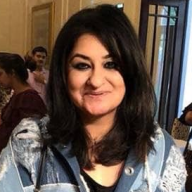
Jasmeen Dugal is Associate Editor at FashionABC, contributing her insights on fashion, technology, and sustainability. She brings with herself more than two decades of editorial experience, working for national newspapers and luxury magazines in India.
Jasmeen Dugal has worked with exchange4media as a senior writer contributing articles on the country’s advertising and marketing movements, and then with Condenast India as Net Editor where she helmed Vogue India’s official website in terms of design, layout and daily content. Besides this, she is also an entrepreneur running her own luxury portal, Explosivefashion, which highlights the latest in luxury fashion and hospitality.


